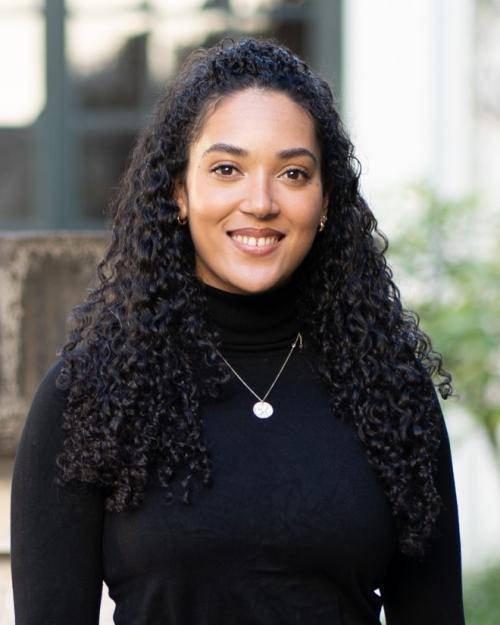Binghamton University welcomed Ana Howie on Oct. 4 to present her research about the representation of water and women in Genoese portraits as the second installment in this year’s “Visual Culture Lecture” (VizCult) Series.
The VizCult program was first established by the Art History Department over two decades ago, introduced during the fall of 1997. The department invites speakers from around and beyond the Binghamton community to present a diverse range of research on a biweekly basis throughout each semester. VizCult aims to disseminate recent research in visual art and allows students and faculty from a variety of disciplines to unite and share perspectives on art.
Howie’s research, entitled “Women, Painters and Water: Gender and Materiality in Genoese Garden Portraits,” explores gender dynamics in elite Genoan civilization through its interactions with water, which was often found flowing through fountains and grottos in gardens. She argues that artists use the aesthetics and physicality of water to reflect societal themes.
Howie, originally from New Zealand, is currently an assistant professor of renaissance and early modern art at Cornell University. She holds a Ph.D. from the University of Cambridge and an M.A. from the Courtauld Institute of Art. In her research and teaching, Howie specializes in the visual and material cultures in early modern Europe, but her interest in art history was first inspired from the collection of pieces and their significance in a book from her teenagehood — “100 Masterpieces of Western Art.”
“I have always been interested in how artworks provide us with a window into history and into the social and cultural structures of a given time and place,” Howie wrote in an email. “Art is not made in a vacuum, but — whether intended to or not — reflects and translates incredible amounts of information about the context in which it was made. I find this to be one of the most fascinating aspects of doing art history.”
Howie read her research among a room of distinguished faculty members and curious students, accompanied by a presentation of monochrome sketches, paintings and excerpts from literature. She specifically focused on the works of Flemish painters Peter Paul Rubens and Anthony van Dyck, who created “Portrait of Maria Doria” and “Portrait of Caterina Balbi Durazzo” respectively.
Howie opened by describing how Genoa’s socioeconomic distinction, derived from seaside commerce and renowned pleasure gardens, incorporated water-based features like fountains, grottos and scherzi d’acqua — water jokes.
In her lecture, she described the details chiseled into the edifice of fountains and the silky sheen of the fabric the women wear — clues masterfully traced by the artists. Howie then explained how Genoan men intentionally operated the aforementioned water features to splash unsuspecting women from jets and spouts, soaking and surprising them for their own entertainment. These structures were architected, engineered and controlled by men as a reflection of an elite patriarchal society.
“There is a tension between the realities of these water games, which mostly targeted — and potentially humiliated — women, and the quiet power that Rubens’ and van Dyck’s sitters exude,” Howie wrote. “I wanted to explore that tension and see if I could answer the questions that the portraits were presenting me with.”
Andrew Walkling, professor of English, art history and theatre, commented on the reactions of Genoan women targeted by men.
“Men laughing at women is different from women laughing with them,” Walking said. “There’s this contrived notion of what laughter is.”
After Howie’s presentation, the floor opened for an extensive question and answer session where Katherine Reinhart, assistant professor of art history, encouraged undergraduate and graduate engagement, but also welcomed further discussion from her Harpur College colleagues.
“Typically [VizCult] takes the form of a work-in-progress seminar, and we have the opportunity to learn about new research as it develops,” Reinhart said.
Esra Nalbant, a third-year graduate student studying art history, drew personal inspiration from Howie’s research.
“[Howie’s] research and presentation are inspiring and got me excited to move forward with my research,” Nalbant wrote in an email. “The way water is conceptualized and represented together with the paintings and landscape elements in Howie’s [presentation] is very original and refreshing. On top of that, her approach to rendering women in these paintings combining the hydraulics of imagination and creative genius is very interesting.”
Reinhart, who selects VizCult speakers on the criterion of how compelling their research is, expressed a similar appreciation for the ingenuity of Howie’s work.
“Her work is a great example of taking a traditional art object — in this case portrait painting — but considering it from a new or unexpected angle,” Reinhart said.
“I hope my audience left my talk with a new way of looking at feminine portraiture,” Howie wrote. “Portraits of women — especially elite women — are often taken at face value as images of beautiful, privileged women dressed in sumptuous garments.”
However, Howie believes that paintings often express more than meets the eye.
“I hope to have shown that we can go much further with our analysis and that paintings can offer a means with which we can reveal much more about the textures of women’s lives, their experiences and the ways they operated in the world,” Howie wrote.



